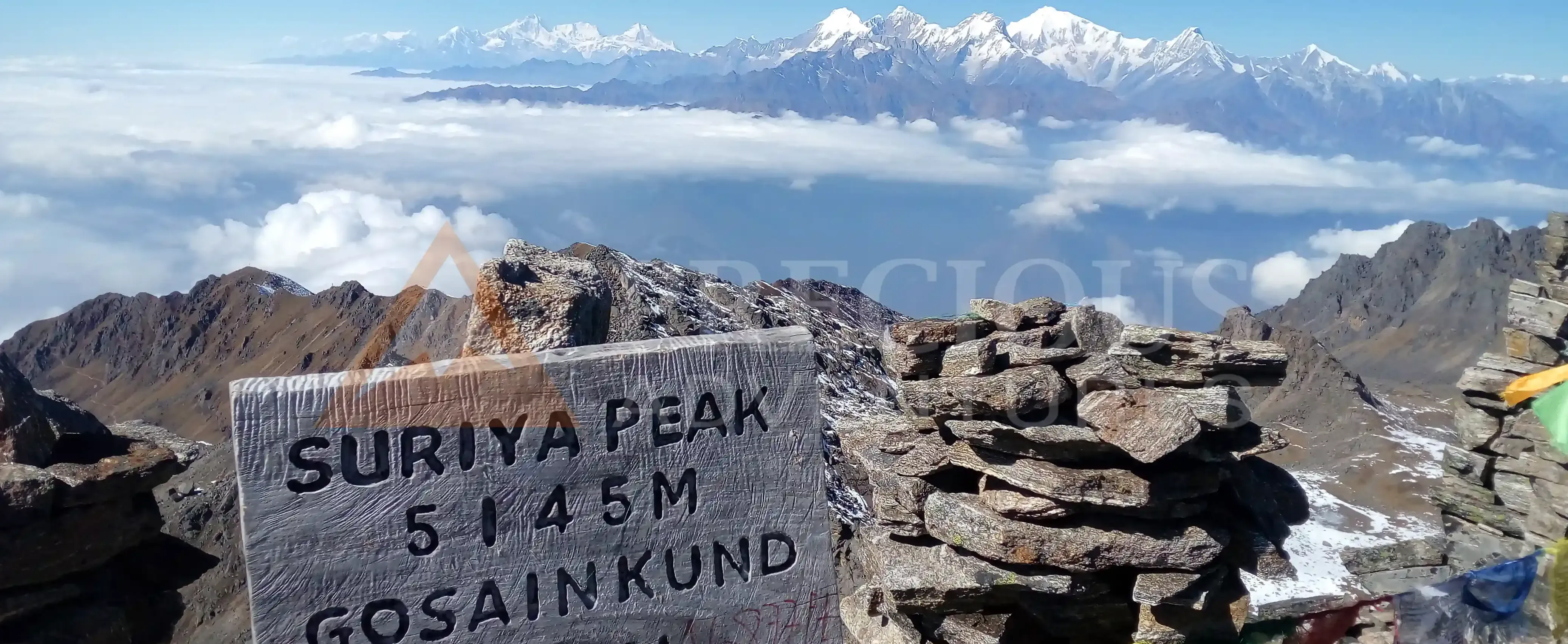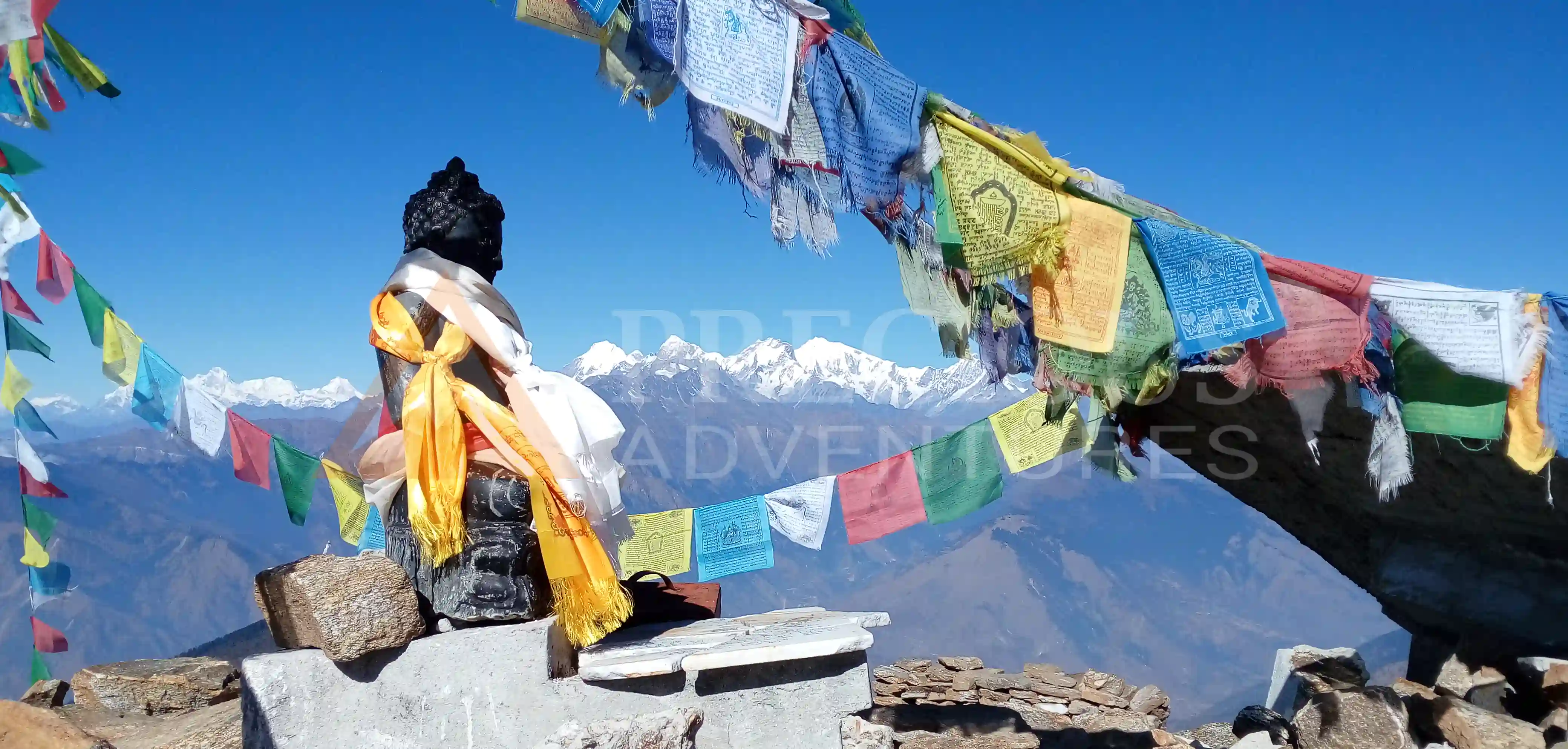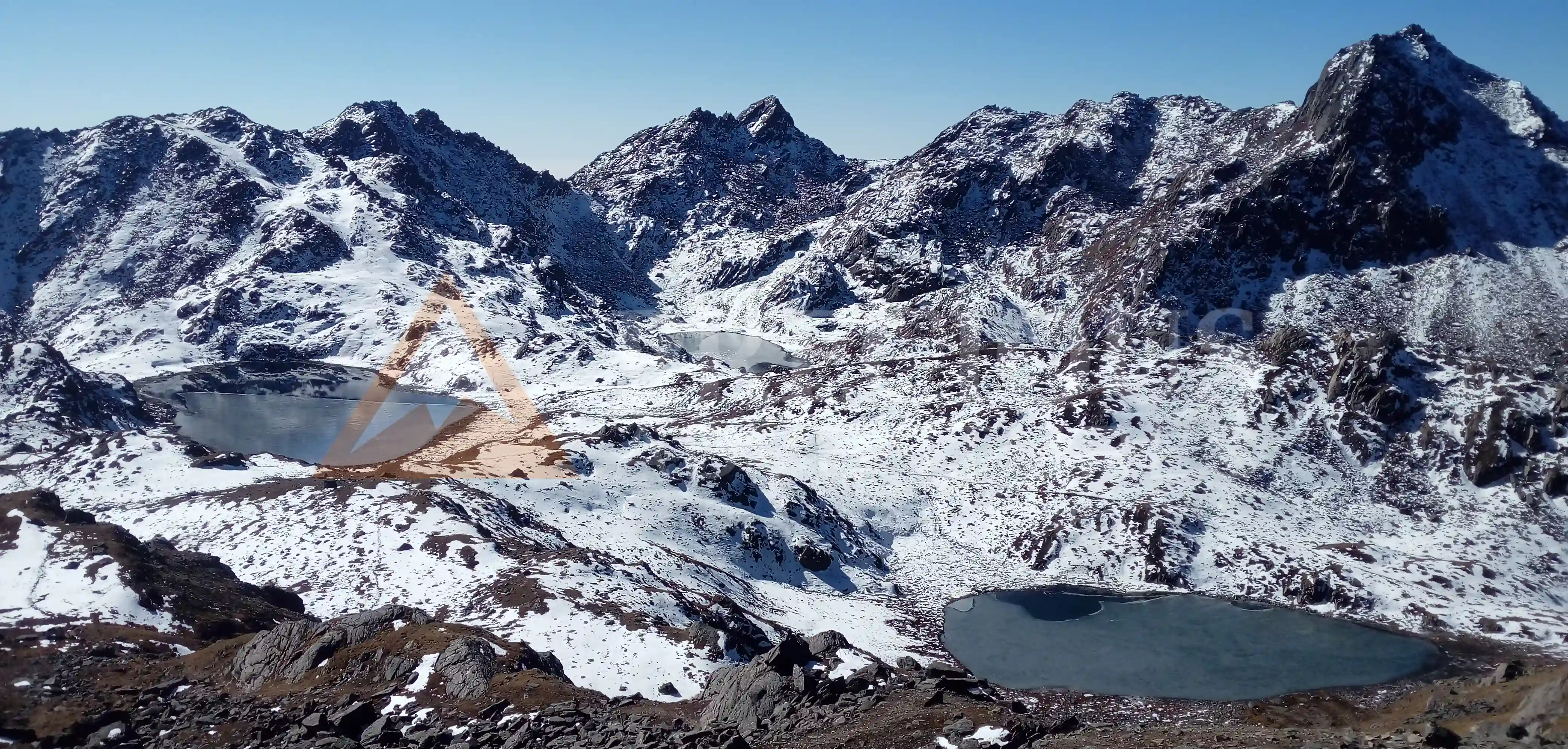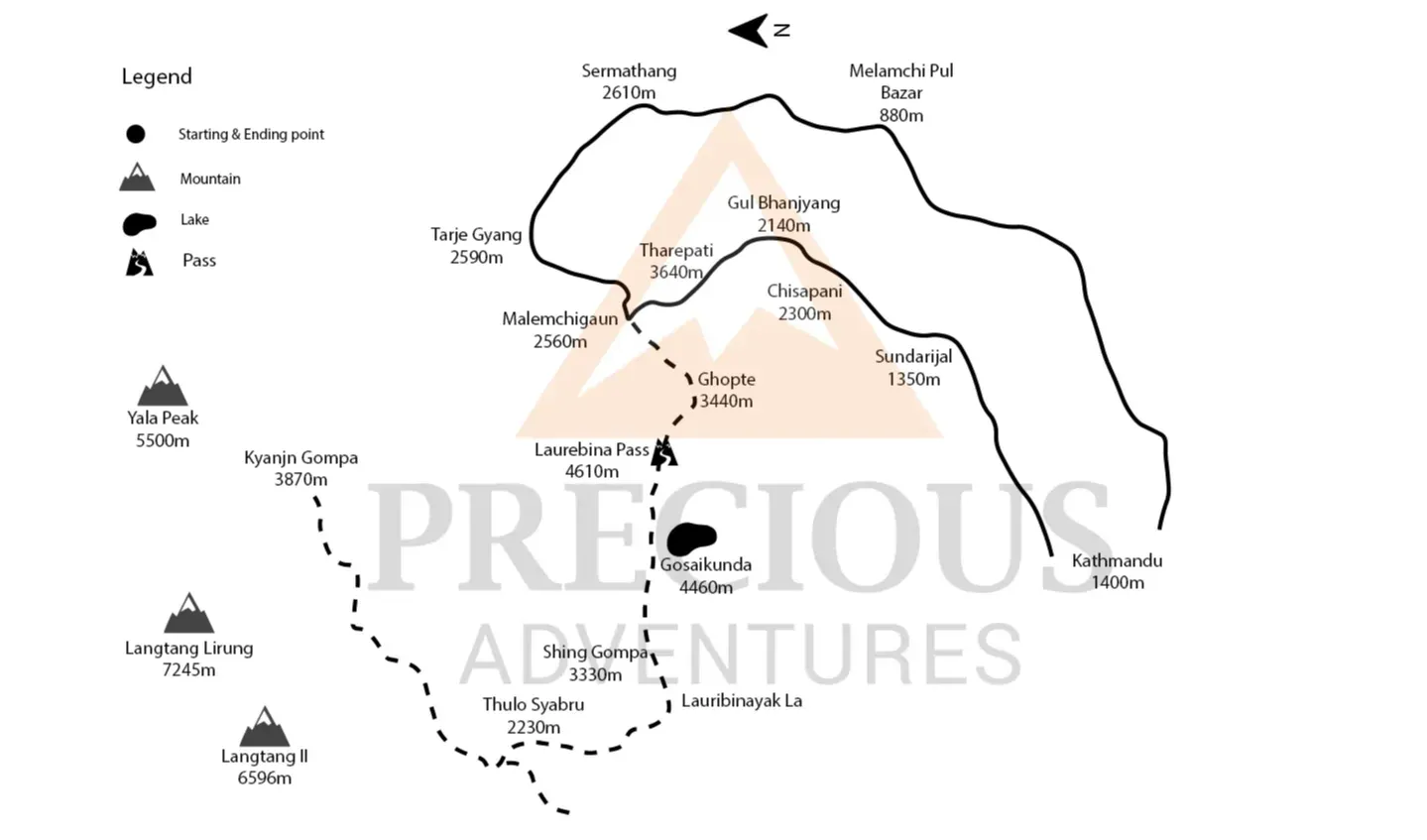
Gosainkunda Helambu Trek
Trek along the lap of the Langtang
The Gosainkunda Helambu trek is a well-known trek in the Langtang region, showcasing a variety of natural beauty, cultural encounters, and spiritual matters. The trek along the lap of the Langtang range with one of the major destination being Gosainkunda, a glacial lake worshiped by all Hindus. The Gosainkunda Helambu Trek takes you through Gosainkunda Lake, an important pilgrimage site for Hindus. According to Hindu mythology, Lord Shiva, one of the main deities in the Hindu religion, created Gosainkunda. It evolved from Samudra Manthana, which means "ocean churning."
The Gosainkunda Helambu trek starts after a drive to Syabrubesi (1,550m) from Kathmandu, a small village in the Langtang region. The Gosainkunda Helambu trek usually takes about 12 days to trek depending on the pace of the trekkers, and the trails taken. Trekkers must trek for an average of about 6 hours a day. The Gosainkunda Helambu trek difficulty can be categorized as moderate with some steep and strenuous sections, but the beautiful scenery and cultural experiences make it well worth the effort. The best season for the trek is from March to May and from September to November (Spring and Autumn). The highest altitude of the Langtang Valley trek is 5,145m above sea level at Suriya Peak.
The Gosaikunda Helambu trek route takes you through lush subtropical forests, the foothills of the Himalayas, and glaciers on the way to the 108 lakes that make up the Gosainkunda. The Himalayan Pheasant, the red panda, and many rarer and exotic animals are found in their natural habitat. The trek provides breathtaking views of snow-capped mountain ranges and peaks, including Langtang Lirung, Ganesh Himal, Jugal Himal, Annapurna Range, Manaslu Range, and others, as you hike along the trails and at viewpoints. You can see the majestic tranquility of the Himalayas. Tamang and Sherpa people are the residents in these areas. The people here have a unique culture that combines Tibetan and Nepalese traditions in a fascinating way.
Start/Finish
Destination
Grade
Max Altitude
Syabrubesi & Ghangyul
Nepal
Moderate
5,145 meters
Region
Stay
Group Size
Season
Langtang Region
12 Days and 11 Nights
2-12
March-May, September-November
Explore beautiful hills, high-altitude lakes, and beautiful snow-covered mountains
Enjoy the panoramic views of Langtang Lirung, Ganesh Himal, Ganchenpo, Kyanjin Ri, Dorje Lakpa, Naya Khang and more
Explore Gosainkunda, and a lake thought to have been created by a God
Opportunity to observe the rugged lifestyle of Tamang and Sherpa ethnic groups and their unique cultural and religious beliefs
Explore the meditation cave of Padmasambhava and stupas such as the Ama Angri Stupa

FIG: gosaikunda-helambu-trek-gallery-1

FIG: gosaikunda-helambu-trek-gallery-2
Whether you want to modify a tour package or want to build an itinerary yourself, you can talk with our local travel specalist to create your ideal trip.

The teahouses along Gosainkunda Helambu Trek offer a variety of fresh and healthy meals. Western dishes such as pizza, spaghetti, and pasta, and traditional Nepalese dishes such as dal, bhat, and Tarkari are available. Dal, bhat, and Tarkari mean rice, lentils, vegetables, meats, and salads and are a high-energy diet. Hot drinks such as tea and coffee are also available. Teahouses and lodges with separate rooms and shared or connected bathrooms are incredibly clean. The space is comfortable and well maintained. Toilet paper may not be available due to the squat toilet on this trail. Therefore, if necessary, bring a toilet paper roll for this walk.
The spring (March to May) and autumn (September to November) are the best times to do this trek. Winters are cold due to snowfall, and the weather seems unfavorable for hiking, but monsoons are bad because rains can make the trail slippery. The nicest mountain vistas are also available in spring and fall, and the weather is almost pleasant. Dashain and Tihar festivals bring a new start to the country in the autumn. However, there is a unique festival in Gosainkunda Lake during Janai Purnima, which falls in August, with many Hindu pilgrims making the journey.
This trek is classified as a moderate-grade trek. You are about to ascend to an altitude above 5,000 m, so it still demands commitment. Maximizing acclimation time is essential, and getting in shape through proper physical activities is also important. The ascent is constant, but there are no particularly steep ascents. In several places, the trail is constrained. You may come across a yak or donkey caravan. Always stay uphill on the road.
The trekking pass has a health post with only basic facilities. The Rasuwa District Hospital in Dhunche is another option. It is a public hospital operated by the government of Nepal. Rescue operations can be carried out in a medical emergency, and your travel insurance will pay for them. Both Kyanjin Gompa and Gosainkunda have helipads for quick evacuation. You can also seek assistance from the locals because of the neighborhood's extensive network of tea houses. Plenty of water is available throughout the trek, which enables easy accessibility of water for personal hygiene. Squat type of toilets available during hikesrequire manual flushing.
The Gosainkunda Helambu trek usually takes about 12 days to trek depending on the pace of the trekkers, and the trails taken. Trekkers must trek for an average of about 6 hours a day.
The highest point on the Gosainkunda Helambu Trek is Suriya Peak, which is located at an altitude of about 5,145 meters (16,880 feet). This point is reached on the seventh day of the trek, and from here you'll have beautiful panoramic views of the surrounding mountains.
It is important to pack appropriately for the Gosaikunda Helambu Trek. Some essential items to bring include: sturdy and comfortable walking shoes, warm and waterproof clothing, a hat and sunglasses, sunscreen, a first-aid kit, and snacks and water for the trek. It is also a good idea to bring a camera to capture the stunning views along the way.
Yes, it is possible to hire a guide and porter for the Gosaikunda Helambu Trek. A guide can help you navigate the route, provide information about the local culture and history, and assist you in case of an emergency. A porter can help carry your gear, freeing you up to focus on enjoying the trek. It is important to choose a reputable agency and to negotiate a fair price for their services.
During the Gosaikunda Helambu Trek, you will stay in teahouses or lodges. These are basic accommodations that typically offer a shared room with twin beds, a pillow and a blanket. Most teahouses and lodges also have shared bathrooms with hot showers (for an extra fee). It is important to note that the facilities in these accommodations may be basic and may not be as comfortable as what you are used to at home. It is also possible to camp during the trek, although this option is less common. If you do choose to camp, you will need to bring your own camping gear and hire a guide and a porter to carry your gear.
Showers are available at some of the teahouses and lodges along the Gosaikunda Helambu Trek, but they may not be available at all locations. The showers may be basic and may require you to pay an additional fee. It is a good idea to bring wet wipes or a small towel to refresh yourself during the trek if showers are not available.
Yes, it is possible to get vegetarian food on the Gosaikunda Helambu Trek. Many of the teahouses and lodges along the route offer vegetarian options, such as dal bhat (a traditional Nepali dish of rice, lentils, and vegetables) and vegetable noodles. It is always a good idea to let your guide or the staff at the teahouses know if you have any dietary restrictions or preferences.
It is possible to charge your electronic devices at some of the teahouses and lodges along the Gosaikunda Helambu Trek, but it is not always possible at all locations. It is a good idea to bring a portable charger or a power bank to ensure that you have enough battery life for your devices during the trek. It is also a good idea to bring a backup power source, such as extra batteries